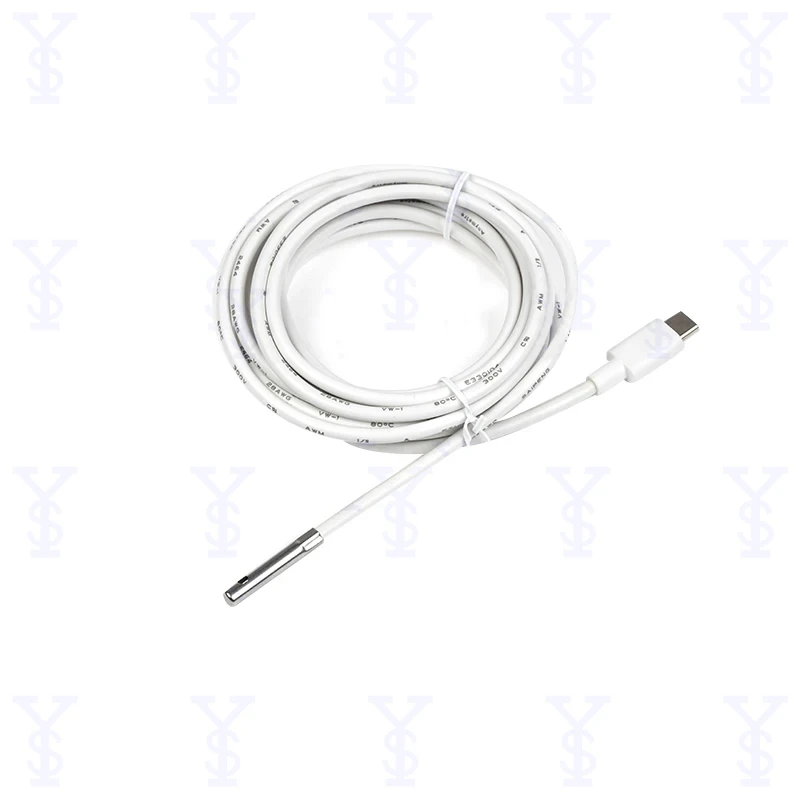Kasalahan format email
emailCannotEmpty
emailDoesExist
pwdLetterLimtTip
inconsistentPwd
pwdLetterLimtTip
inconsistentPwd


Understanding the Difference: Thermocouple vs Temperature Sensor
When measuring temperature in various applications, two common tools are often used. These tools are thermocouples and temperature sensors. Both serve the same fundamental purpose: temperature measurement. However, they have different characteristics, applications, and advantages. In this blog, we will explore these differences. We will dive into the specifics of each tool. This will help you understand which one might be the best fit for your needs.
What is a Thermocouple?
A thermocouple is a type of temperature sensor. It is made by joining two different metals at one end. The junction where the metals meet creates a small voltage. This voltage is produced when exposed to a temperature change. The voltage is directly related to the temperature at the junction. This allows the thermocouple to measure temperature.
Thermocouples are known for their simplicity and robustness. They can measure a wide range of temperatures. They measure from very low to extremely high temperatures. This makes them suitable for various industrial applications. The two most common types are Type K and Type J thermocouples. Type K is made from Nickel-Chromium vs. Nickel-Aluminum. Type J is made from Iron vs. Constantan. Each type has specific temperature ranges and applications.
Advantages of Thermocouples:
- Wide Temperature Range: Thermocouples can measure temperatures from as low as -200°C to as high as 2000°C. This depends on the type.
- Durability: Thermocouples are generally durable. They can withstand harsh environments.
- Cost-Effective: Thermocouples are relatively inexpensive compared to other temperature sensors.
- Fast Response Time: Thermocouples provide quick readings. This is due to their small size and simple construction.
Disadvantages of Thermocouples:
- Accuracy: Thermocouples are less accurate than some other temperature sensors. They can be affected by electromagnetic interference.
- Drift: Over time, the materials in the thermocouple can degrade. This can lead to potential inaccuracies.
- Need for Calibration: Regular calibration is required. This ensures accurate readings.

What is a Temperature Sensor?
The term "temperature sensor" is quite broad. It encompasses various types of devices designed to measure temperature. These sensors include thermistors, resistance temperature detectors (RTDs), and integrated circuits (ICs) with temperature sensing capabilities.
Thermistors: These are resistive temperature devices. They are made of ceramic materials. Their resistance decreases or increases with temperature changes. This allows for precise temperature measurement over a limited range.
RTDs: Resistance Temperature Detectors are sensors made from pure platinum or other metals. The resistance of the metal changes predictably with temperature. This provides highly accurate measurements.
IC Temperature Sensors: These are semiconductor devices. They provide temperature readings based on voltage changes. They are often used in consumer electronics and integrated circuits. This is due to their ease of use and compact size.
Advantages of Temperature Sensors:
- High Accuracy: RTDs and thermistors offer very high accuracy.
- Stable Readings: They provide stable readings with minimal drift over time.
- Versatility: Temperature sensors are available in various forms and ranges. This makes them suitable for different applications.
- Ease of Integration: IC temperature sensors can be easily incorporated into electronic systems.
Disadvantages of Temperature Sensors:
- Limited Temperature Range: Many temperature sensors have a narrower temperature range. For example, thermistors have a smaller range compared to thermocouples.
- Cost: High-accuracy sensors, like RTDs, can be more expensive.
- Size and Complexity: Some temperature sensors are larger and more complex. This can make them less ideal for compact or harsh environments.
Comparing Thermocouples and Temperature Sensors
When choosing between a thermocouple and a temperature sensor, several factors should be considered:
- Temperature Range: Thermocouples excel in extreme temperature ranges. They are ideal for high-temperature industrial processes. Thermistors and RTDs are better suited for moderate temperature ranges. However, they offer greater accuracy within those ranges.
- Accuracy: If precision is crucial, temperature sensors like RTDs and thermistors are typically more accurate than thermocouples. They are often used in laboratory settings or applications requiring high precision.
- Environment: Thermocouples are more robust and durable for harsh or high-temperature environments. Temperature sensors might require additional protection. In extreme conditions, they might not perform as well.
- Cost: Thermocouples are generally more cost-effective. This makes them a popular choice in industrial applications where multiple sensors are needed.
- Response Time: Thermocouples often have a faster response time. This can be advantageous in dynamic processes where temperature changes quickly.
Practical Applications
Let’s look at some practical applications to better understand these differences:
Thermocouples in Action:
- Industrial Furnaces: Thermocouples are used to measure and control temperatures in industrial furnaces. These furnaces can exceed the limits of other sensors.
- Gas Turbines: Thermocouples monitor temperatures in gas turbines and engines. This ensures optimal performance and safety.
- Metal Processing: In metal processing industries, thermocouples measure molten metal temperatures. This is due to their high-temperature range.
Temperature Sensors in Action:
- Consumer Electronics: IC temperature sensors are used in devices like smartphones and computers. They monitor and manage internal temperatures.
- HVAC Systems: RTDs and thermistors are commonly used in heating, ventilation, and air conditioning systems. They provide accurate temperature control.
- Medical Devices: High-precision temperature sensors are critical in medical devices. They monitor body temperature and ensure accurate readings.
Conclusion
Both thermocouples and temperature sensors play vital roles in temperature measurement. Each has its strengths and weaknesses. Choosing between them depends on your specific needs. Consider the temperature range, accuracy, environment, cost, and response time required for your application. By understanding these differences, you can make an informed decision. This will ensure accurate and reliable temperature measurements for your project or system.
Whether you’re looking to measure high temperatures in industrial processes or need precise temperature control in electronic devices, knowing the nuances of "thermocouple vs temperature sensor" will help you select the right tool for the job.

